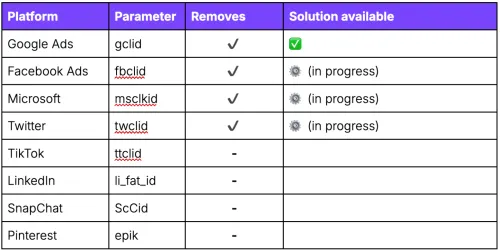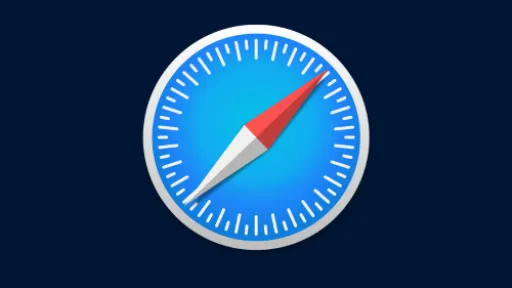Update (17-09-2025): Apple has released Safari 26.0 (release notes). Unlike the earlier beta, click IDs will remain available in standard browsing mode for now. However, Apple has introduced Advanced Tracking and Fingerprinting Protection, giving users the option to block tracking parameters such as click IDs themselves.
Our vision at Follo: this might seem like a small relief, but it’s once again a clear signal that tracking capabilities are being restricted step by step. The question is not if, but when a future update will directly impact your tracking setup.
That’s why we believe server-side tracking is an absolute must for advertisers. It ensures a future-proof setup, allows you to measure more conversions, and keeps your campaigns performing at their best—even as browsers or platforms roll out new restrictions.
What are click identifiers (click IDs) in online advertising?
A click ID (such as gclid, fbclid, msclkid, twclid) is a unique parameter automatically added to a link when someone clicks on an ad. Thanks to this identifier, a platform can see exactly where the click came from and whether the user made a purchase or filled out a form afterwards.
Without click IDs, it’s nearly impossible to accurately attribute conversions to campaigns.
Example of a Google Ads click ID in a URL
Click here for an example of a Google Ads click ID in a URL.
Safari update 2025: which click IDs will disappear?
The September 2025 Safari update removes click IDs across several ad platforms. Below you’ll find an overview of which identifiers are disappearing and whether solutions are already available.

Why click IDs matter for conversion tracking
Click identifiers are crucial for conversion tracking and campaign optimization. Without them:
- Google Ads will register fewer conversions
- ROI calculation becomes harder due to missing data
- Custom audiences shrink because some conversions go untracked
- You lose the full picture needed to optimize campaigns
In short: losing click IDs can impact your entire marketing strategy.
How to prepare for the Safari update 2025
For some platforms, no solution is available yet. Fortunately, for Google Ads tracking there is a reliable approach.
Both client-side and server-side solutions exist, but based on our research, only Server-side Google Tag Manager offers a robust and future-proof method.
Keep Google Ads tracking with Server-side Google Tag Manager
- In Google Ads, we set a custom parameter that gets appended to the URL, for example:
follo_gc:{gclid} - Safari does not recognize the parameter “follo_gc,” which means this click ID remains intact. 🎉
- When a user clicks on your ad, we capture the “follo_gc” parameter along with the associated click ID.
- Next, in Google Tag Manager, the parameter is converted back to gclid and forwarded to Google Ads.
Result?
The click IDs are preserved, allowing you to continue measuring and optimizing conversions from Google Ads campaigns.
The downsides of a client-side solution
Technically, client-side setups are possible—but far less stable. A client-side setup requires a cookie for each user. As soon as Google or another platform changes the cookie name or structure, tracking breaks.
Because such changes often happen without warning, you risk losing conversion data without noticing. This makes the client-side method time-consuming, error-prone, and costly. At Follo, we therefore only implement the server-side click ID tracking solution.
Are you ready for the Safari browser update?
You already have server-side tracking
Then you only need to make small adjustments in Google Ads and Google Tag Manager. Our specialists can help ensure your conversion tracking remains intact.
You don’t have server-side tracking yet
Now is the time to make the switch. Server-side tracking not only ensures click IDs are preserved, but also brings additional benefits. Read more in our other blogs or visit our server-side tracking page.
Questions about the Safari update 2025 and the impact on tracking?
The September 2025 Safari browser update is technical and may raise questions. Although the update has not yet rolled out—and uncertainties remain—we recommend taking action now. This way, you’ll be prepared for this change and better equipped to adapt quickly to future updates from browsers and ad platforms.
Which platform will be next to launch a major change, we don’t know. But one thing is certain: more privacy-driven updates are coming.
Our specialists are ready to help. Feel free to contact us.




